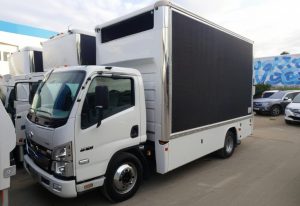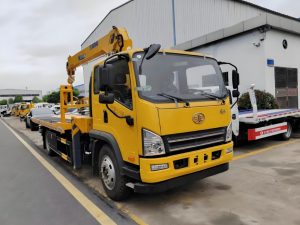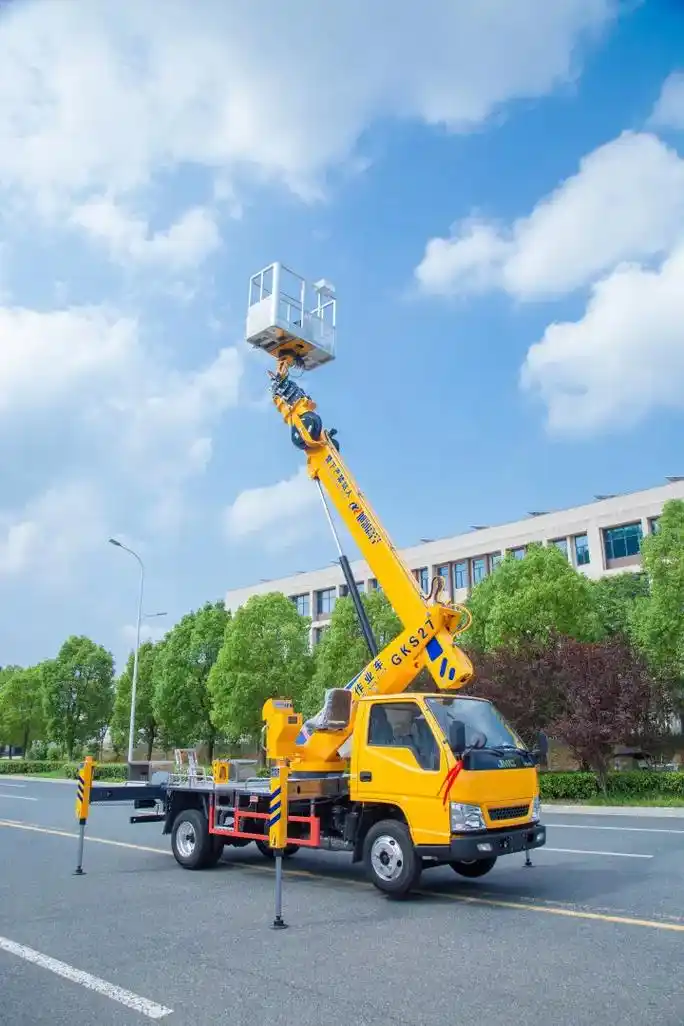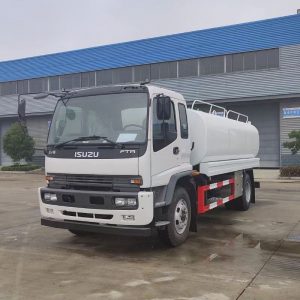Table of Contents
Toggle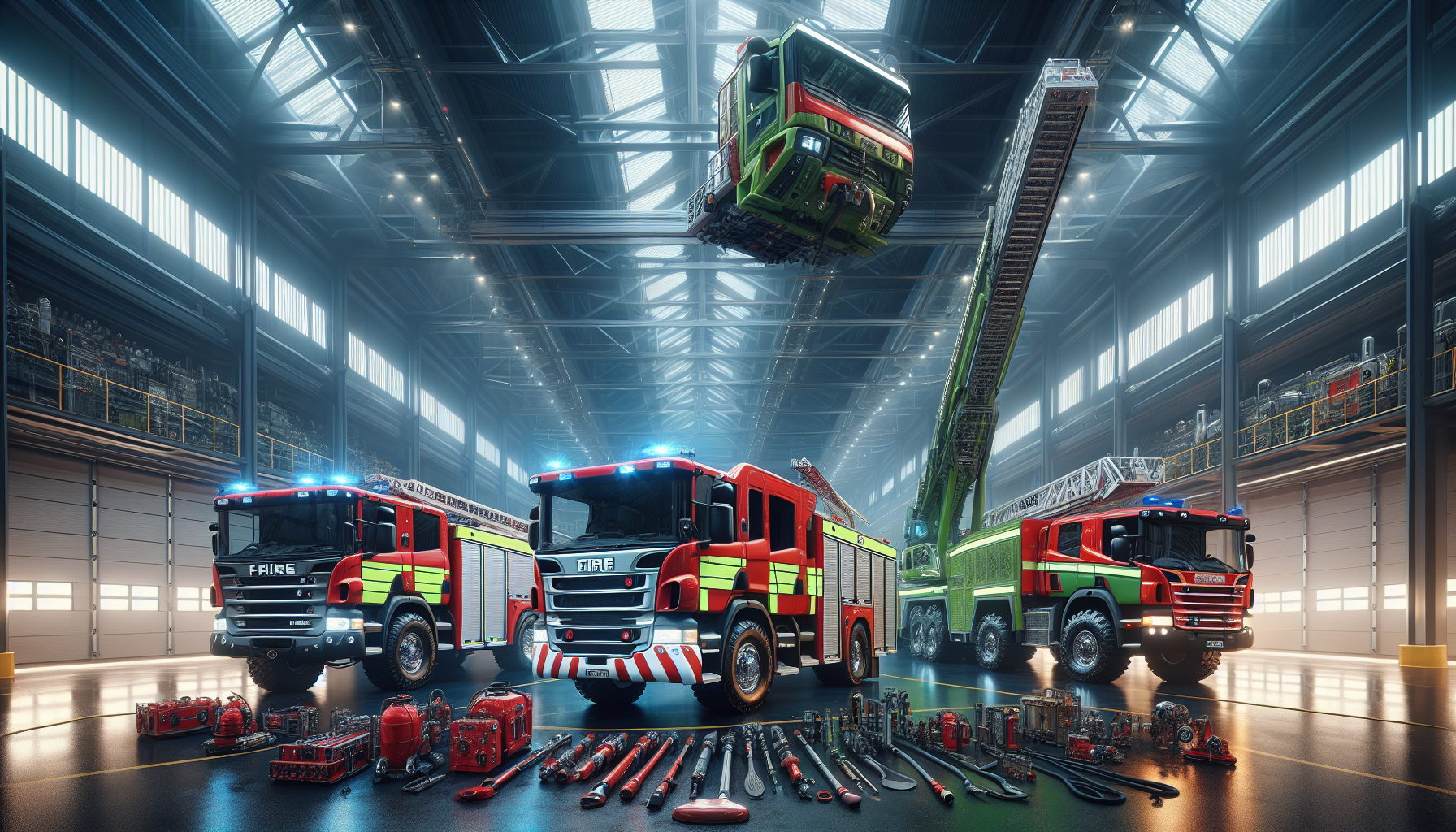
Fire trucks are the backbone of emergency response, serving as crucial tools in firefighting and rescue operations. These specialized vehicles come in various models, each designed to tackle specific challenges faced by firefighters in different environments. Understanding the differences between fire truck types is essential for fire departments to make informed decisions about their fleet composition and capabilities.
This article aims to compare different fire truck models and evaluate their strengths and weaknesses. It will explore the various classifications of fire trucks, from Type 1 engines to aerial apparatus and specialized units. The discussion will cover the features, functions, and best applications of each type, as well as recent innovations in fire truck design. By examining these factors, readers will gain insights into which fire truck models are best suited for different firefighting scenarios and department needs.
Understanding Fire Truck Classifications
Fire trucks are classified based on their specific capabilities and functions, allowing fire departments to effectively respond to various emergency situations. These classifications are standardized by organizations such as the National Fire Protection Association (NFPA) and the National Wildfire Coordinating Group (NWCG).
NFPA Standards
The National Fire Protection Association has established comprehensive standards for fire apparatus, which play a crucial role in defining and classifying fire trucks. These standards ensure that fire trucks meet specific requirements for safety, performance, and functionality.
NFPA 1901 is a key standard that outlines the requirements for new automotive fire apparatus and trailers. This standard is designed to address the needs of vehicles used under emergency conditions to transport personnel and equipment, as well as to support fire suppression and hazardous situation mitigation. It provides a framework for classifying fire trucks based on their intended use and capabilities.
In recent years, the NFPA has undertaken an effort to consolidate its standards. As part of this consolidation plan, NFPA 1901 has been combined into a new consolidated standard, NFPA 1900. This consolidation aims to streamline and improve the accessibility of fire apparatus standards.
Another important standard is NFPA 1911, which focuses on the inspection, maintenance, testing, and retirement of in-service fire apparatus. This standard helps ensure that fire trucks remain in safe operating condition and are always ready for emergency response. Like NFPA 1901, NFPA 1911 has also been consolidated into a new standard, NFPA 1910, as part of the NFPA’s ongoing efforts to streamline its documentation.
These NFPA standards provide a foundation for classifying fire trucks based on their design, capabilities, and maintenance requirements. They help fire departments and manufacturers ensure that fire trucks meet specific criteria for different types of emergency responses.
NWCG Standards for Wildland Fire Resource Typing
The National Wildfire Coordinating Group (NWCG) has developed standards specifically for wildland firefighting resources, including fire trucks used in these specialized operations. The NWCG Standards for Wildland Fire Resource Typing establish minimum typing standards for various resources, including aircraft, crews, and equipment used in wildland fire incidents.
These standards assign typing designations based on measurable capability and performance criteria. By doing so, they enable accurate ordering and acquisition of needed resources in support of nationally interoperable wildland fire operations. This classification system is particularly important for coordinating resources across different agencies and jurisdictions during large-scale wildfire events.
The NWCG Standards for Wildland Fire Resource Typing are jointly developed and maintained by several NWCG committees and their subgroups. These include the NIMS Integration Committee (NIMSIC), Equipment Technology Committee (ETC), National Interagency Aviation Committee (NIAC), and Incident and Position Standards Committee (IPSC). This collaborative approach ensures that the standards reflect the diverse needs and experiences of various wildland firefighting organizations.
In addition to the general resource typing standards, the NWCG has also developed specific standards for airtanker operations. A draft version of the NWCG Standards for Airtanker Operations (PMS 514) is currently available for review. This document establishes standards for dispatching, utilizing, and coordinating airtankers on wildland fires, further refining the classification and operational guidelines for these specialized firefighting aircraft.
By providing clear classifications and standards for both structural and wildland firefighting vehicles, these organizations enable fire departments and other emergency response agencies to make informed decisions about their equipment needs. These classifications ensure that fire trucks are properly equipped and capable of handling the specific challenges they may face in different firefighting scenarios.
Type 1 Fire Engines: The Workhorses
Design and Capabilities
Type 1 fire engines, also known as engine companies or structural firefighting trucks, are the most common and versatile fire trucks in use today. These vehicles are designed to support urban, rural, and suburban fire departments with their comprehensive array of firefighting equipment. The design of Type 1 engines prioritizes both functionality and efficiency, allowing them to respond effectively to a wide range of emergency situations.
One of the key features of Type 1 fire engines is their water-carrying capacity. These trucks are equipped with a minimum tank size of 300 gallons, although most models feature a 400- to 500-gallon water tank. This substantial water supply enables firefighters to initiate immediate fire suppression efforts upon arrival at the scene. In addition to their water-carrying capabilities, Type 1 engines are required to have a pump that can deliver a minimum of 1000 Gallons Per Minute (GPM) of water transfer, ensuring a powerful and sustained water flow during firefighting operations.
The design of Type 1 fire engines also takes into account the need for maneuverability in densely populated areas. These trucks are built to efficiently navigate through urban environments, allowing them to reach emergency scenes quickly and deploy their resources effectively. This balance between size and maneuverability makes Type 1 engines well-suited for responding to structural fires in various settings.
Equipment Carried
Type 1 fire engines carry a comprehensive array of tools and equipment to address a wide range of emergency situations. In accordance with National Fire Protection Association (NFPA) standards, these trucks are equipped with a variety of firefighting hose lines and nozzles. Specifically, they must carry both 2 ½ inch and 1 ½ inch thick hoses of varying lengths, providing firefighters with options for different fire suppression scenarios.
The equipment complement of a Type 1 engine extends beyond hoses and nozzles. These trucks carry a wide assortment of tools, including:
- Ground ladders of various sizes
- Forcible entry equipment
- Self-contained breathing apparatus (SCBA)
- Chainsaws and circular saws
- Air lift bags
- Extension and roof ladders
- Generator with cords and lights
- Ventilation blower
- Cribbing supplies
- Class B foam
In addition to firefighting equipment, Type 1 engines are often equipped with advanced life support (ALS) equipment, including a complete set of medical supplies and a 12-lead ECG. This medical capability allows fire crews to provide immediate emergency medical services (EMS) response when needed.
Urban and Suburban Applications
Type 1 fire engines are primarily designed for structural firefighting and initial EMS response in urban and suburban environments. Their versatility makes them the go-to choice for fire departments serving densely populated areas. These engines are typically the first to arrive on the scene of a structural fire, equipped to start fire extinguishing tasks immediately.
The design and equipment of Type 1 engines make them particularly well-suited for fighting fires in elevated buildings. Their array of ladders allows firefighters to access fires at various heights, while their powerful pumps ensure a steady supply of water to combat the blaze. In situations where the onboard water tank is insufficient, Type 1 engines are capable of quickly establishing connections to external water sources, such as fire hydrants, to maintain a continuous water supply.
Type 1 fire engines are designed to carry a crew of 3 to 4 firefighters, providing a balance between personnel capacity and vehicle maneuverability. This crew size allows for immediate action upon arrival at an emergency scene, with firefighters able to perform various tasks simultaneously, from operating the pump to deploying hoses and ladders.
The versatility of Type 1 fire engines extends beyond firefighting. Their EMS capabilities make them valuable assets in medical emergencies, allowing fire departments to provide rapid response and advanced life support when needed. This dual-purpose functionality makes Type 1 engines essential components of modern fire departments, capable of addressing a wide range of emergency situations in urban and suburban settings.
Type 2 and 3 Fire Engines: Versatility in Action
Similarities and Differences
Type 2 and Type 3 fire engines represent versatile options in firefighting, each with unique characteristics suited to different environments. Type 2 engines share many similarities with Type 1 trucks, featuring comparable specifications and tools. These engines are commonly found in urban and suburban settings, often serving as first response units for vehicle accidents and rescue operations. Type 2 trucks offer a more compact design while still maintaining significant storage capacity for equipment.
In contrast, Type 3 engines, also known as wildland fire trucks or brush trucks, are designed for rural and wildland settings. They possess distinctive features that enable them to navigate challenging terrains effectively. Type 3 engines typically sit on a commercial 4×4 chassis, allowing them to function as wildland urban interface vehicles. Their sleek and maneuverable design enables them to access areas close to wildfires while maintaining stability and control.
Ideal Use Cases
Type 2 engines excel in urban and suburban applications, particularly as first responders to structural fires. Their compact size and equipment capacity make them ideal for initiating fire extinguishing tasks until additional support arrives. These engines are well-suited for fire departments seeking a more compact rescue engine or heavy-duty rescue vehicle with a smaller water tank and pump but ample storage for equipment.
Type 3 engines find their niche in wildland firefighting scenarios. Their design allows them to manage off-road and variable terrain effectively, making them crucial assets in combating wildfires. These engines can get as close to the fire as possible while maintaining vehicle stability and control. The ability to perform “pump-and-roll” operations is a critical feature, enabling firefighters to create fire lines and wet down areas ahead of advancing wildfires.
Equipment Specifications
Type 2 engines typically carry a crew of 3 to 4 firefighters and are equipped with a wide array of basic firefighting gear and specialized tools. This equipment includes self-contained breathing apparatus (SCBAs), circular saws, chainsaws, and various other specialized items tailored to the department’s needs.
Type 3 engines have specific requirements to meet their wildland firefighting role:
- Water capacity: Minimum of 500 US gallons, with a maximum of 1,500 US gallons
- Pump capability: Minimum flow of 150 GPM at a rated pressure of 250 PSI
- Hose length: 1,000 feet of 1 ½ inch hose and 500 feet of 1 inch hose
- Crew capacity: Minimum of 3 personnel
- Gross Vehicle Weight Rating (GVWR): Greater than 26,000 lbs
Type 3 engines often feature a power-take-off (PTO) pump, allowing the vehicle to remain in motion while simultaneously fighting fires. Many are also equipped with an auxiliary pump in addition to the main water pump. This auxiliary pump can be powered by a separate diesel engine or a hydraulic PTO circuit with its own pressure governor, enabling the crucial pump-and-roll technique.
The versatility of Type 2 and Type 3 fire engines allows fire departments to respond effectively to a wide range of emergency situations, from urban structural fires to rural wildfires. Their specialized designs and equipment configurations make them invaluable assets in the firefighting arsenal, capable of adapting to diverse environments and challenges.
Wildland Firefighting Trucks
Wildland firefighting trucks, also known as brush trucks, are specialized vehicles designed to combat fires in rural and wilderness areas. These trucks are engineered to navigate challenging terrains and provide essential firefighting capabilities in environments where traditional fire engines may struggle to operate effectively.
Type 4 Fire Engines
Type 4 fire engines share similarities with Type 3 trucks but have distinct features tailored for wildland firefighting. These vehicles are built to handle rough terrain and have a gross vehicle weight rating (GVWR) of 26,000 lbs. The most notable characteristic of Type 4 engines is their larger water tank capacity, typically 750 gallons, which comes at the expense of a smaller pump and reduced hose capacity compared to Type 3 engines.
Key specifications of Type 4 fire engines include:
- Water tank capacity: 750 gallons
- Pumping capability: 50 US gallons per minute at 100 pounds per square inch
- Minimum crew capacity: 2 personnel
- 4-wheel drive chassis for improved off-road performance
Type 4 engines are versatile and can be used for both wildland firefighting and emergency response in rural areas where their larger water capacity is advantageous.
Type 5-7 Fire Engines
Types 5, 6, and 7 fire engines are often grouped together due to their similar design qualities. These vehicles are typically based on pickup trucks with 4-wheel drive on a medium-duty chassis. The main distinction between these types is their maximum GVWR:
- Type 5: Maximum GVWR of 26,000 lbs
- Type 6: Maximum GVWR of 19,500 lbs
- Type 7: Maximum GVWR of 14,000 lbs
These smaller fire engines are highly customizable to meet the specific needs of each fire department. They can be configured for various purposes, such as:
- Initial fire suppression response
- EMS response with a small medical kit
- Water suppression with a 300-gallon tank and a small booster pump
Type 5-7 engines are commonly used in both wildland and suburban settings, offering excellent maneuverability and accessibility. They typically carry a minimum of 2 personnel and are equipped with hoses ranging from 1 inch to 1 ½ inch in diameter.
Specialized Features for Off-Road Use
Wildland firefighting trucks incorporate several specialized features to enhance their performance in off-road and challenging environments:
- Enhanced Maneuverability: These trucks often feature a shorter wheelbase, allowing for greater tactical traversal through variable terrain.
- Improved Angles: The design focuses on optimizing the angle of approach and departure, ensuring smooth transitions between on-road and off-road environments without causing damage to the vehicle.
- Traction Systems: Wildland fire trucks are equipped with all-wheel drive or 4-wheel drive systems, front winches, and traction tires to maximize control on rough and variable terrain.
- Pump-and-Roll Capability: Many wildland firefighting trucks feature auxiliary pumps driven by separate hydraulic pumps or Tier 4 diesel engines. This allows the vehicle to remain in motion while simultaneously fighting fires, which is crucial for creating firelines and preventing fire spread.
- Increased Water Capacity: Wildland urban interface (WUI) trucks often carry 500-1000 gallons of water to support structural firefighting needs in rural settings where water sources may be limited.
- Foam Systems: Many trucks are equipped with firefighting foam systems to enhance water efficiency and improve fire-extinguishing capabilities in areas with limited water access.
- Enhanced Storage: Wildland firefighting trucks often feature increased storage capacity, including hatch storage to keep gear and equipment dry in various environmental conditions.
These specialized features enable wildland firefighting trucks to effectively combat fires in challenging terrains and provide crucial support in areas where traditional fire engines may be ineffective.
Aerial Apparatus: Reaching New Heights
Aerial apparatus plays a crucial role in modern firefighting, providing firefighters with the ability to access upper levels of buildings, perform rescues, and deliver water from elevated positions. These specialized vehicles come in various configurations, each designed to meet specific operational needs.
Aerial Ladders
Aerial ladders are mechanically-operated extendable ladders mounted on fire trucks. They can be configured as mid-mount, rear-mount, or tractor-drawn devices. These ladders are designed to maximize vertical reach for rapid response, ventilation, extinguishment, and rescue operations.
One of the key advantages of aerial ladders is their compact design, making them ideal for use in areas with limited space and overhead obstacles. The tip of the ladder allows for easy and agile access amongst trees, electric lines, balcony railings, and closely spaced buildings. Aerial ladder trucks are typically lower in overall height than platform fire trucks, making them suitable for older infrastructure and communities with narrow streets and lower overhead doors.
Tractor-drawn aerial fire trucks, also known as tillers, consist of a tractor, a trailer, and a tiller cab. Despite their length, these vehicles are highly maneuverable, capable of navigating obstacles and steering into narrow and tight locations. This makes them ideal for suburban communities with cul-de-sacs and busy urban areas. Pierce tractor-drawn aerials can range between 57 to 63 feet in length, with a typical height of approximately 11’2″.
Articulating Platforms
Articulating platforms, also known as elevating platform devices or tower ladders, feature an aerial ladder equipped with a platform or basket at the tip. These enclosed spaces allow for safe up and down passenger transportation, making them ideal for communities or cities with many people working and living in elevated locations.
Elevating platforms have a high tip load capacity, supporting both firefighters and firefighting equipment. They are often equipped with single or dual mounted deck guns, making them an excellent choice for fire departments that require higher water flow for larger buildings and industrial facilities.
Some articulating platforms, such as the Snorkel brand, feature an articulating (elbow-jointed) water tower with a bucket on the end. This design allows for greater flexibility in positioning the platform around obstacles.
Water Towers
Water towers are aerial devices designed specifically for elevated fire suppression that does not require rescue capability. These devices can range from 50 feet to 130 feet in operating heights and are capable of delivering water flow exceeding 2,000 gallons per minute (gpm).
A Pierce water tower is equipped with an extendable telescopic boom featuring a permanent waterway capable of delivering water flows up to 1,250 gpm. An extendable ladder with optional folding handrails to minimize overall height is attached to the top side of the boom. Pierce water tower fire trucks offer operating heights that range from 55 to 61 feet.
Water towers are commonly found in industrial fire service or departments looking for elevated master stream capabilities. Their strength comes from a solid box design, making them ideal for situations where a high volume of water is needed at elevated positions.
In conclusion, aerial apparatus provides fire departments with versatile tools for tackling fires and performing rescues in various urban and industrial settings. Whether it’s an aerial ladder for agile maneuvering, an articulating platform for safe personnel transport, or a water tower for high-volume water delivery, these specialized vehicles significantly enhance firefighting capabilities and safety.
Specialized Fire Trucks
Rescue Trucks
Rescue trucks are specialized vehicles designed to transport and provide equipment necessary for technical rescue operations. These vehicles carry an array of special equipment such as the jaws of life, wooden cribbing, generators, winches, hi-lift jacks, cranes, cutting torches, circular saws, and other forms of heavy equipment unavailable on standard trucks. This capability differentiates them from traditional pumper trucks or ladder trucks, which are primarily designed to carry firefighters, their entry gear, on-board water tanks, hoses, and equipment for fire extinguishing and light rescue.
Rescue trucks can be categorized into two main types: walk-in and non-walk-in. Walk-in rescue trucks feature open space in the body devoted to personnel, typically with an aisle down the center, providing ample space for firefighters to sit and replenish at the scene of an emergency. Non-walk-in rescue trucks, on the other hand, are more common as they offer the most storage capacity, making them ideal for fire departments faced with various rescue scenarios requiring multiple types of equipment.
The choice between walk-in and non-walk-in rescue trucks depends on factors such as the number of firefighters needed on scene, common tasks performed during emergencies, and the tools required for successful operations. Understanding these factors helps fire departments determine the ideal storage configuration and overall function of the rescue truck.
Tanker Trucks
Tanker trucks, also known as tenders, have evolved to become versatile, multi-purpose support vehicles customized to match the unique needs of fire departments across North America. Historically, their main purpose has been to haul water and play a pivotal role in the water shuttle process, especially in areas with limited access to fire hydrants.
When designing a tanker truck, fire departments must consider several factors:
- Mission of the truck
- Amount of water needed on board
- Storage requirements
- Equipment to be carried
Tanker trucks can be classified as either a pumper fire apparatus or a mobile water supply, according to National Fire Protection Association (NFPA) guidelines. A mobile water supply must include a water tank with a minimum certified capacity of 1,000 gallons, while a pumper tanker apparatus requires a water pump with a minimum rated capacity of 750 gallons per minute and a water tank with a minimum certified capacity of 300 gallons.
Hazardous Materials Response Units
Hazardous materials (hazmat) response units are specialized fire trucks designed to respond to emergencies involving potentially hazardous substances or materials. These units carry the tools, equipment, technology, and personnel with the expertise to manage hazardous situations effectively.
Hazmat trucks often feature a command center equipped with various technology systems for communication, video and audio recording, and scene visibility. They may include workstations, WiFi, phones, weather monitoring systems, and even enclosed laboratories for on-site chemical testing.
Key equipment carried on hazmat trucks includes:
- Overpack drums for containing leaking containers
- Plug kits for filling punctures in tanks and gas lines
- Containment berms, blankets, and absorbent booms for controlling spilled liquids
- Gas detection and radiation-monitoring equipment
- Protective suits, disposable boots, and gloves
- Long-handled scrub brushes and decontamination equipment
These specialized fire trucks play a crucial role in emergency response, providing the necessary tools and expertise to handle complex and potentially dangerous situations effectively.
Innovations in Fire Truck Design
Fire truck design has undergone significant advancements in recent years, focusing on improving safety, efficiency, and environmental impact. These innovations have revolutionized the way firefighters respond to emergencies and perform their duties.
Electric and Hybrid Models
The introduction of electric and hybrid fire trucks has marked a significant shift in the industry. The Pierce® Volterra™ platform and the Rosenbauer RTX electric fire truck exemplify this trend. These vehicles offer zero emissions during operation, reducing environmental impact and improving air quality at emergency scenes. The Volterra™ platform features an Oshkosh Patented Parallel-Electric Drive Train with an electro-mechanical infinitely variable transmission (EMIVT) and integrated onboard batteries. This system allows for all-electric, zero-emission operation, with the ability to seamlessly transition to an internal combustion engine for extended operations.
The Rosenbauer RTX, powered by two electric motors with a total output of 490 hp, offers flexible charging capabilities and zero local emissions. It also incorporates a state-of-the-art six-cylinder diesel engine as a power generator for longer operations, providing a balance between electric efficiency and extended operational capabilities.
Advanced Safety Systems
Modern fire trucks are equipped with cutting-edge safety features to protect firefighters and improve operational efficiency. The Rosenbauer RTX showcases several advanced systems, including:
- Electronic rearview mirrors with an increased field of vision
- Full rearview through an integrated rear camera
- Automatic object recognition to avoid collisions
- Night vision function
These features enhance situational awareness and reduce the risk of accidents during emergency responses. Additionally, the Pierce Volterra™ platform incorporates safety features such as strategically placed batteries that contribute to vehicle safety without compromising compartment space or body configuration.
Ergonomic Improvements
Ergonomic design has become a crucial aspect of fire truck innovation, focusing on firefighter comfort, safety, and efficiency. Key ergonomic improvements include:
- Adjustable seats and steering wheels to accommodate firefighters of different heights and body types
- Easy-to-reach cab controls and switches, designed for operation without excessive stretching or bending
- Anti-fatigue mats and flooring options to reduce strain during extended periods of standing or driving
- Strategic compartmentation for quick and safe retrieval of equipment
- Improved visibility through wrap-around dashboards and panoramic windshields
The Rosenbauer RTX exemplifies these ergonomic advancements with its lowerable body, allowing for an entry height of just 10 inches in operation mode. This design reduces physical strain on emergency crews and improves operational success. The RTX also features rotatable commander seats and an oval seating arrangement to enhance cab communication.
These innovations in fire truck design demonstrate a commitment to improving firefighter safety, operational efficiency, and environmental sustainability. As technology continues to advance, fire departments can expect further enhancements that will revolutionize their ability to respond to emergencies and protect communities.
Conclusion
Fire trucks play a crucial role in emergency response, with various models designed to tackle different challenges. From Type 1 engines, the workhorses of urban firefighting, to specialized wildland trucks and aerial apparatus, each type has unique features to handle specific situations. The comparison of these models shows how fire departments can tailor their fleet to meet their community’s needs, whether it’s fighting structural fires in cities or battling wildfires in rural areas.
Recent innovations in fire truck design are causing a revolution in the industry. Electric and hybrid models are leading the charge towards more eco-friendly firefighting, while advanced safety systems and ergonomic improvements are making the job safer and more efficient for firefighters. These advancements show that the fire service is always evolving to keep up with new challenges and to better protect communities. As technology continues to progress, we can expect fire trucks to become even more sophisticated and effective in their life-saving missions.


